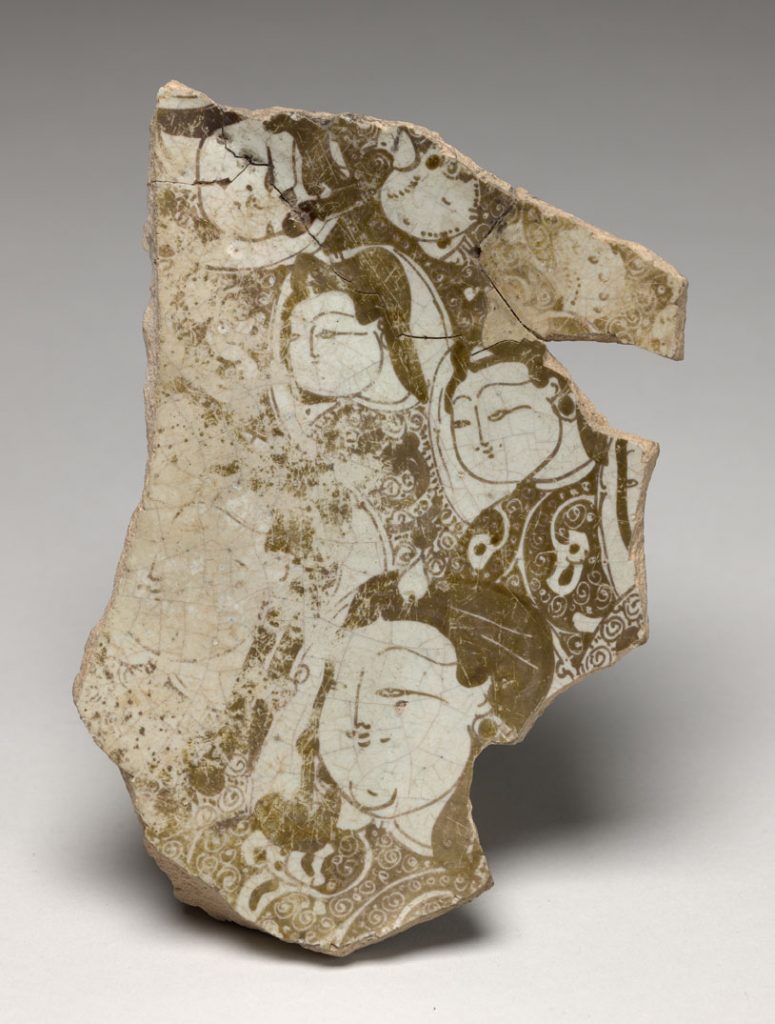Iran, Kashan. c. 1200–1220 CE
Fragment of a dish with five heads
Fritware, painted in luster over an opaque white glaze
Gift of Elinor Lander Horwitz, class of 1950
SC 2016:29-41
This ceramic fragment was likely once part of a large dish or plate. The white discs behind the figures’ heads may imply a royal or divine status. Similar shapes – halos or almond-shaped mandorlas – are symbols of divinity and holiness across many religious traditions, including Islam, Christianity, and Buddhism. An alternate interpretation, however, suggests that these white circles simply serve to provide visual contrast between the figures’ faces and the busy background.
This fragment of fritware – clay with added quartz and ground glass – is an example of a style of lusterware created in the city of Kashan in the early 13th century. To create the design, metallic pigment was painted onto a previously glazed and fired dish in the shape of the desired image, then scraped away in some areas for additional detail. A second firing at a lower temperature reveals the pigment’s iridescent sheen.
Amanda Click, Smith College ‘17
[ Detailed Image Description: A fragment of a ceramic dish with uneven broken edges. The fragment has a design painted in an iridescent brown-gold pigment over a white glaze with a crackled texture. Some of the design and glaze has rubbed off to reveal the buff-colored clay beneath. The design consists of five human figures: four are clearly present, with the fifth mostly worn away so that only a faint outline of an eyebrow, nose, and chin are visible. The figures overlap, so only their busts and heads are shown. Their genders are not clearly indicated, and they all have round, white faces with chubby cheeks and elongated narrow eyes. Each figure wears ornate clothing decorated with spiral patterns, and has a white oval shape behind their head.]
